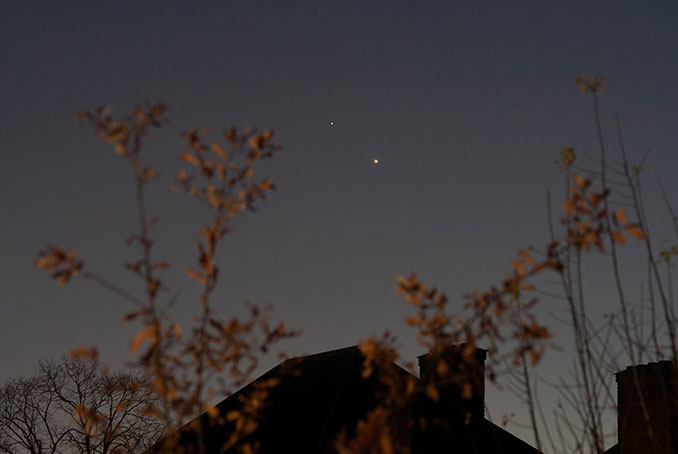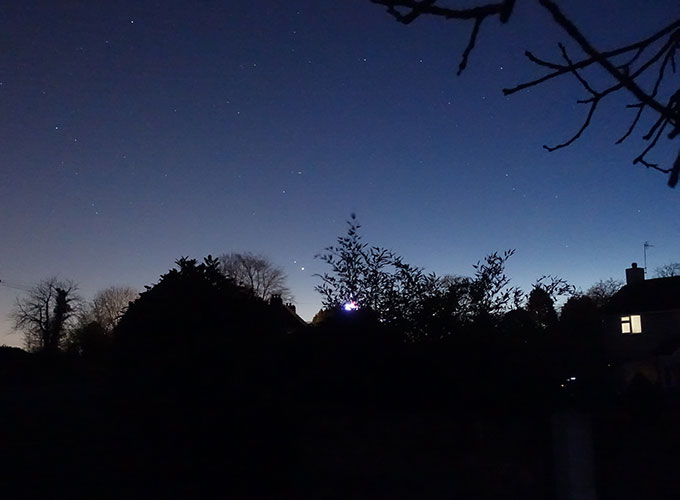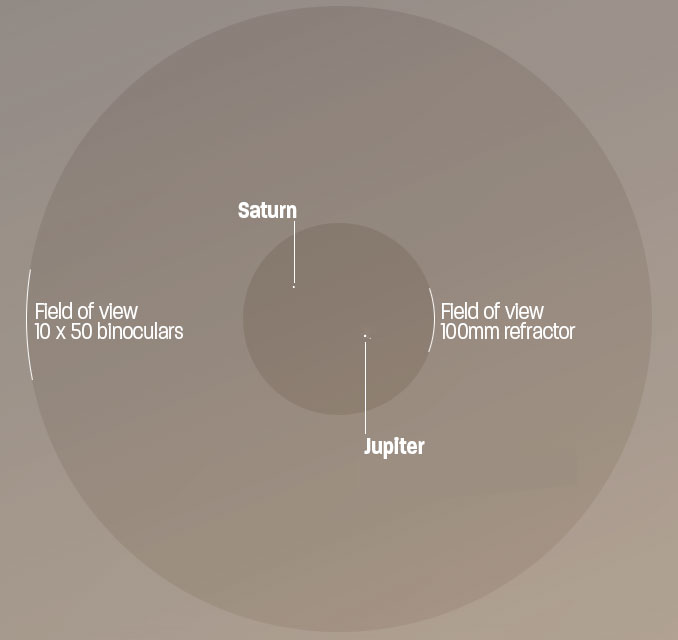The countdown is on for the great conjunction of Jupiter and Saturn. The two giant planets of the Solar System will lie a mere six arcminutes (0.1 degree) apart, only one-fifth of the diameter of the full Moon, on next Monday, 21 December.

One could describe this event as being almost 400 years, or even 800 years in the making. The last time the two gas giants were this close was in July 1623, about 20 years before the outbreak of the English civil war and when Galileo Galilei was peering through his crude telescopes. If fact, Galileo would have struggled to see this conjunction, owing to the fact that Jupiter and Saturn were placed just 13 degrees from the Sun.
We have to go back a further 400 years or so, to March 1226, not long after the Magna Carta (‘Great Charter’) was signed and Henry III was King of England, to find a conjunction between the two gas giants that was observable; on this occasion they were separated by just two arcminutes!
Conjunctions of Jupiter and Saturn are the rarest conjunctions between the major planets, occurring roughly every 20 years as a result of the combined effect of Jupiter’s 11.9-year and Saturn’s 29.5-year journey once around the Sun. Commonly, their separation is much greater; fast forwarding to the beginning of this millennium, in 2000, another tough conjunction to observe, the planets were over a degree apart. You get the idea then that this conjunction is a very special event.

However, there’s plenty to see this week in the run up to closest approach. Jupiter and Saturn have for some time been providing a spectacular sight soon after sunset, as Jupiter, with its speedier eastwards motion on the inside track, has been inexorably bearing down on Saturn. They are already closer together than at the 2000 event, though to see them you’ll need a good view to the south-south-western horizon.

As the Sun sets this evening, at 3.51pm GMT from London, Jupiter, shining at magnitude –2.0, lies around 41 arcminutes to the west-south-west (just to the lower-right) of Saturn, which, at magnitude +0.6, shines markedly fainter. The pair lie at an altitude of around 15 degrees above the south-south-western horizon at azimuth 200 degrees, which is about 30 degrees further around to the south than the Sun. A handy way to gauge distances is to hold out your arm with a clenched fist; it’s around 10 degrees across the knuckles. A pair of 10 x 50 binoculars should snare both planets, but be sure that the Sun has set at your location before sweeping close to the horizon.
The sky will have darkened by a fair amount about 40 minutes later, the end of civil twilight (when the Sun has sunk six degrees below the horizon), when the planetary pair will be easier to see with the naked eye, lying at a still reasonable altitude of around 12 to 13 degrees. By the end of nautical twilight (when the Sun lies 12 degrees down), which occurs at about 5.15pm GMT from London, the sky is appreciably darker, though both planets have slipped below ten degrees in altitude.
Given a haze-free sky, Jupiter’s four bright Galilean moons should be visible in a pair of 10×50 binoculars, while a small telescope can pick out Titan, Saturn’s giant moon.
Over the course of the next two sunsets, on Wednesday 16th and Thursday 17th, a very young crescent Moon slides south of Jupiter and Saturn, providing even more drama to the spectacle. Its thin crescent will lie just too far away from the planets, unfortunately, for all to fit in the same 10×50 binocular field (on the 17th, the Moon lies 6.5 degrees to the left [south-east] of Saturn. Astro-imagers will, I’m sure, acquire some splendid shots, though.

By this time, Jupiter and Saturn have closed to within around 28 arcminutes of each other, diminishing to around 15 arcminutes by post-sunset on Saturday 19 December, two days before the main event.
Hopefully, the British weather will cooperate this week at some stage and allow observers to see Jupiter and Saturn in action in preparation for Monday. If you’re clouded out or unable to observe before closest approach, and remain unsure of a suitable observing site, it will pay dividends to conduct some daytime research, over the weekend perhaps. Town and city dwellers in particular may need the vigour of an eclipse chaser planning their next solar eclipse expedition to stake out a favourable viewing point. At sunset on 21 December, Jupiter’s azimuth is around 205 degrees from London, 202 degrees from Manchester and 198 degrees from Edinburgh. A compass, smartphone app or otherwise, will give you your bearings.
